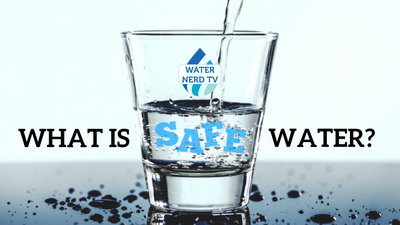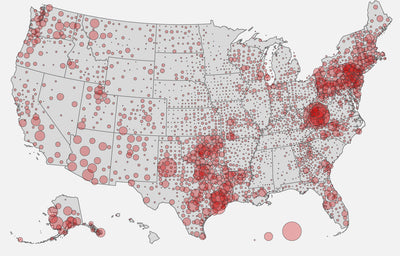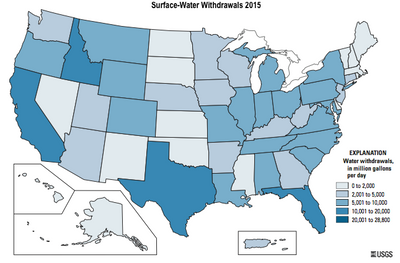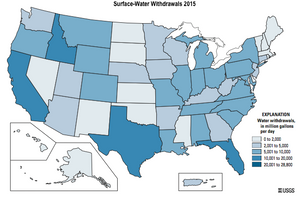Analies Dyjak | Policy Nerd
One of the most frequently asked questions that our Water Nerds get asked is, “is my water safe?” Unfortunately, the answer to this isn’t all that cut and dry. We wanted to make a quick video explaining what “safe” really means.
What Does "Safe" Drinking Water Actually Mean?
“Safe” is a regulatory definition that means your drinking water is in compliance with standards set by the decades-old Safe Drinking Water Act (SDWA). There are only 90 contaminants regulated under this act, and thousands of others that are not. Unless mandated by the state, municipalities don't account for any unregulated contaminants. According to EPA, if the levels for each regulated pollutant meet EPA’s standard, then the drinking water is in compliance and therefore "safe". This doesn't take into account the presence of unregulated contaminants such as chromium 6 or 1,4-dioxane. On April 10, 2024, the US EPA has announced drinking water standards to limit exposure to 6 types of PFAS chemicals.
Can States Regulate Drinking Water?
States can create their own standards for regulated and unregulated contaminants, California being the best example. Most states typically don’t prioritize setting drinking water standards, or can’t afford to do so. Also, setting more stringent safe drinking water standards means that municipalities are responsible for complying with new allowable limits. This often means purchasing detection equipment as well as expensive filtration technology. More often than not, fitting these huge expenses into a local budget is impossible, and states take that into consideration when setting new standards.
Defining Legal Jargon
It’s important to understand the difference between enforceable and non-enforceable regulatory terms. Non-enforceable terms include; Lifetime Health Advisory Levels, Public Health Goals, Minimum Risk Levels, and Maximum Contaminant Level Goals. All of these are non-enforceable terms, and therefore municipal water treatment facilities do not need to comply with them. The only enforceable safe drinking water standards are Maximum Contaminant Levels and Action Levels.
Why are Enforceable and Non-Enforceable Standards Different?
Often, EPA is aware that their enforcement standards are set higher than what toxicologists consider to be safe. To address this, EPA creates Maximum Contaminant Level Goals (MCLGs) which refer to “the maximum level of a contaminant in drinking water at which no known or anticipated adverse effect on the health would occur...” The MCLGs are non-enforceable levels, and enforcement is only to MCLs (Maximum Contaminant Levels).
In 2001, EPA set an enforceable Maximum Contaminant Level (MCL) of 10 parts per billion for Arsenic in drinking water. That same year, EPA adopted an MCLG of 0 parts per billion. This was EPA’s way of acknowledging that there really is no safe level of Arsenic in drinking water. EPA is unable to adopt a lower threshold because municipal water systems across the country would be out of compliance. EPA has to balance the cost imposed onto water municipalities, with the benefits associated with human health.
This same principle goes for contaminants with health advisories. EPA previously set a lifetime health advisory of 70 parts per trillion for PFOA. Soon after, the Center for Disease Control recommended reducing the advisory level to 20 parts per trillion for the same contaminant. Finally, there are several health and regulatory agencies that understand that federal limits are set way over a safe threshold. At Hydroviv, we look at toxicological data instead of regulatory data when determining if your water is safe. We prefer to make recommendations about what doctors and pediatricians say is safe.
In Summary
That was a lot of information so here’s a recap! When municipalities label water as “safe,” they’re only referring to the handful of regulated contaminants. There’s a lot of regulatory jargon that might make it hard to understand the difference between the recommended monitoring level and the enforceable monitoring level. And finally, what regulations say and what toxicologists say is very different in terms of “safe” levels. At Hydroviv, we look at toxicological data instead of regulatory data. We prefer to make recommendations about what doctors and pediatricians say is safe.
Other Articles We Think You Might Enjoy:Is Ionized Alkaline Water a Scam?
5 Things To Know About Arsenic In Drinking Water
Why Does EPA Allow "Acceptable" Amounts of Toxic Substances In Drinking Water?







